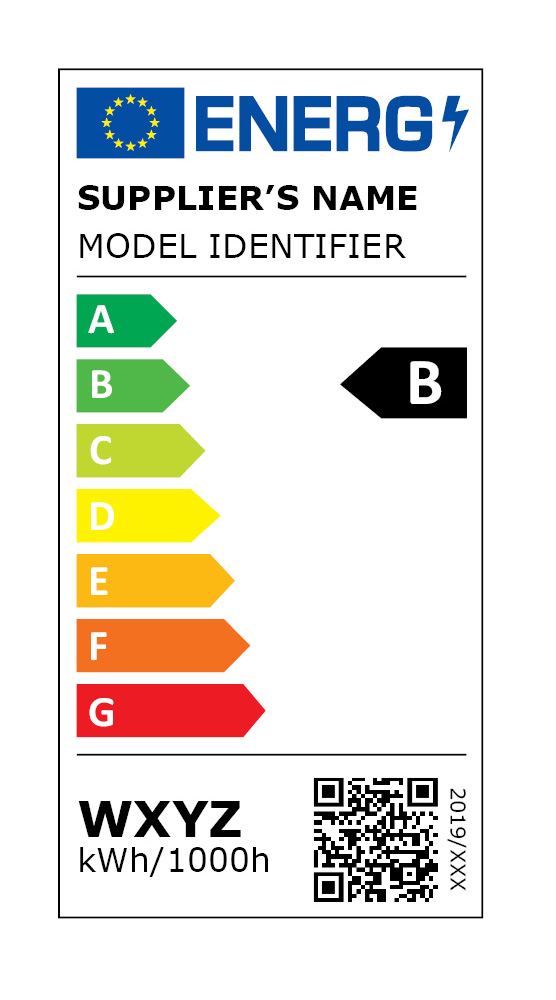
FAQ

-
What has the Commission adopted? When will consumers see them in shops?
The Commission has today adopted the final format and visual identity of new energy efficiency labels for 6 product groups:5 product groups of household appliances with "rescaled" labels:
1) dishwashers;
2) washing machines and washer-driers;
3) refrigerators, including wine storage fridges;
4) lamps;
5) electronic displays, including televisions monitors and digital signage displays.
A new labelling product group for refrigerating appliances with a direct sales function (also known as “ commercial fridges”) used in shops and vending machines.
These new labels will be visible for European consumers in physical stores and on-line as of March 1st 2021, exception for lamps that will be visible in shops from September 1st 2021. -
From when manufacturers have to apply the new label on domestic appliances?
From November 2020 suppliers must ensure that each product included in the rescaling is accompanied by a label printed in the new format (although having to present both labels, the new label must not be displayed), and that the parameters contained in the product information sheet are entered in the database products that is linked to the QR code printed on the new labels.
-
Why the move towards a single 'A to G' energy label
Since 1995, the EU energy label has proven to be a success: 85% of European consumers recognise and use it when purchasing. It has also driven innovative industry developments and competition, with new products placed on the market progressively moving up in energy classes. Although initially most of the models were in the lowest classes (i.e. E, F, G), new models deserved higher until the situation where today most are now in the top classes (A+++, A++, A+) and no product is now in the lowest classes (in some cases, even A). However, such a positive result now makes it difficult for consumers to distinguish the best performing products: they might think that in buying an A+ class product they are buying one of the most efficient on the market, while in fact they are sometimes buying an average product or even one of the least efficient ones. In order to make it easier for consumers to understand and compare products, the EU has decided to have in future only 'A to G' energy labels. The EU adopted in 2017 a revised energy labelling system consisting of: A return to the well-known and effective energy labelling scale 'A to G' for energy efficient products, including a process for rescaling the existing labels. A digital database for new energy efficient products, so that all new products placed on the EU market are registered on an online database, allowing greater transparency and easier market surveillance by national authorities. This will improve understanding and coherence, thus facilitating consumers to correctly identify the most efficient products.
-
What additional information will the new labels provide?
Depending on the product, the energy labels will display not only electricity consumption, but also other energy and non-energy information, with intuitive pictograms, to compare products and perform a better-informed purchase choice: information about water used per washing cycle, storing capacity, noise emitted, etc. A new element in these labels is a QR code with which consumers will be able to get additional, official (non-commercial) information by scanning the code with a common smartphone.
-
How does the new energy label look like?
